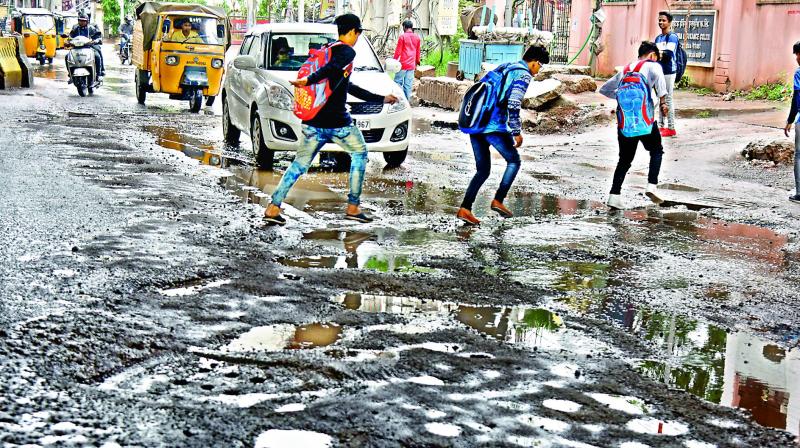Southwest monsoon hits peak' in Southern Peninsula

HYDERABAD: Despite the country facing a rain deficit by 8 per cent, the Southwest Monsoon has hit its ‘peak’ in 2018 at least in the southern Peninsula.
The reason for the occurrence is that, this year, the intensity and frequency of weather systems that developed over the Bay of Bengal was the highest in number when compared to the past. These systems that strengthen the monsoon currents leading to rainfall have not moved towards Northeastern India or Myanmar. They progressed towards the Northwest that is over the central belt comprising of Telangana, Andhra Pradesh, Orissa, Vidharbha and Karnataka. So, the rain share of Northeast India was diverted to the Central and southern states resulting in surplus rains.
The rainfall distribution percentage issued by the IMD from the beginning of the monsoon season on June 1 up to August 20, shows East and Northeastern India that comprises of the seven sister states and Gangetic West Bengal facing a rain deficit by 28 per cent. This means even after three months of monsoons, these states have not met the normal average, because the rain share has been diverted to South India. Northwestern India starting from West Rajasthan covering Jammu and Kashmir to Delhi up to East Uttar Pradesh is facing a rain shortfall by 6 per cent. In this belt, Punjab has received less rain (-22 per cent). In Central India, the deficit was around 3 per cent not very far from its target, while most states like Odisha, Goa, Maharashtra and Chhattisgarh have crossed the average rainfall mark.
However, the southern peninsula of India, which comprise of Coastal Andhra Pradesh, Telangana, Tamil Nadu, Kerala, coastal Karnataka, including the Andaman and Nicobar and Lakshadweep Islands received ‘surplus’ rainfall by 13 per cent. Vice-President Climatology, Skymet, Mahesh Palawat, said, “This year the frequency and intensity of low-pressure areas over the Bay of Bengal is more in comparison to previous years. All these weather systems such as low pressure or depressions moved westwards to Odisha, Coastal AP, Telangana, Chhattisgarh and East MP as well as Vidarbha, leading to a heavy spell. That is why central-south India received excess rainfall. In the absence of any cyclone, northeast India faced rain deficit which is reflected in the pan-India rain deficiency of 8 per cent.”
Kerala and coastal Karnataka also received very intense spells of rain. An offshore trough persisted from south Maharashtra to Kerala. Moreover a cyclonic circulation also persisted over the Southeast Arabian Sea. Low-pressure areas and depressions over the Bay of Bengal also acted as a catalyst to enhance wind intensity over the west coast particularity over Kerala and Karnataka which led to excess rainfall, he added.

